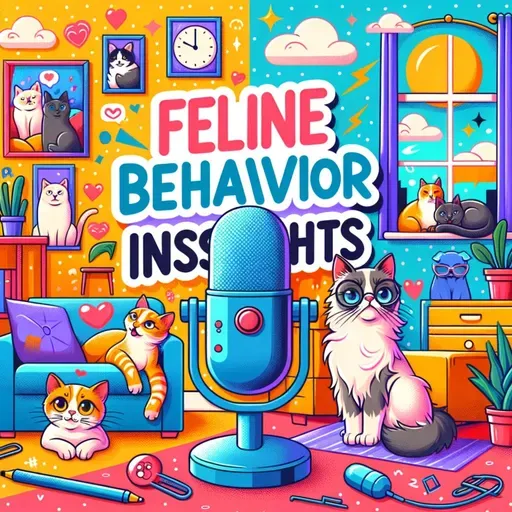
13 October 2025
Feline Communication: Decoding Cats' Subtle Cues for a Happier, Healthier Bond
Feline Behavior Insights
About
Feline behavior fascinates and mystifies people all over the world. Anyone who’s ever shared their home with a cat knows these creatures communicate in subtle ways using body language, vocalizations, and even their habits throughout the day. According to Tuft & Paw, cats forecast their intentions with body shapes and their tails can reveal a lot. A high, puffed tail might signal a cat trying to appear bigger for intimidation, while a tail tucked between the legs means fear or submission.
PetMD points out that happy cats display loose, relaxed postures with their limbs stretched comfortably or even bellies exposed—though this isn’t always an invitation for a belly rub. A relaxed feline may cuddle up or knead soft surfaces with their paws in a motion often called making biscuits. They’ll have upright ears facing forward, and a tail held high with a little curl at the end. If a cat blinks slowly at someone, it’s actually showing trust and affection; people can even blink slowly back to build rapport.
Cats also use vocal cues. As Penn Today reports, cats aren’t simply aloof; research shows they actually recognize their names and can bond securely to their guardians. Purring typically signals pleasure and contentment, but sometimes it’s used for self-soothing if a cat feels stressed or unwell. Meowing can be a friendly greeting or a demand for food or attention.
Common behaviors like scratching and climbing usually come from deep instinct. According to Pets Best, cats scratch not just to keep their claws sharp but also to mark their territory, thanks to scent glands in their paws. Providing scratching posts or surfaces that are more appealing than furniture is key, since it guides that natural urge without causing damage at home.
Play is another crucial part of feline life. As PetMD explains, a cat stalking a feather wand or pouncing on a toy is reenacting hunting behavior, using keen senses and lightning-fast reflexes. Play helps cats stay mentally and physically fit, and it’s also how they practice communication—monitoring each other’s postures, eye size, and tail movements.
Cats have many ways of showing stress, too. You might notice a tense, crouched posture, wide or narrowed eyes, and whiskers pulled forward. According to the RSPCA, sudden behavioral changes could indicate a cat is upset, scared, or even in pain, so staying attentive to what’s normal for an individual feline is vital for their well-being.
Thanks for tuning in to this journey into feline behavior insights. Be sure to subscribe for more animal wisdom. This has been a quiet please production, for more check out quiet please dot ai.
For more http://www.quietplease.ai
Get the best deals https://amzn.to/3ODvOta
This content was created in partnership and with the help of Artificial Intelligence AI
PetMD points out that happy cats display loose, relaxed postures with their limbs stretched comfortably or even bellies exposed—though this isn’t always an invitation for a belly rub. A relaxed feline may cuddle up or knead soft surfaces with their paws in a motion often called making biscuits. They’ll have upright ears facing forward, and a tail held high with a little curl at the end. If a cat blinks slowly at someone, it’s actually showing trust and affection; people can even blink slowly back to build rapport.
Cats also use vocal cues. As Penn Today reports, cats aren’t simply aloof; research shows they actually recognize their names and can bond securely to their guardians. Purring typically signals pleasure and contentment, but sometimes it’s used for self-soothing if a cat feels stressed or unwell. Meowing can be a friendly greeting or a demand for food or attention.
Common behaviors like scratching and climbing usually come from deep instinct. According to Pets Best, cats scratch not just to keep their claws sharp but also to mark their territory, thanks to scent glands in their paws. Providing scratching posts or surfaces that are more appealing than furniture is key, since it guides that natural urge without causing damage at home.
Play is another crucial part of feline life. As PetMD explains, a cat stalking a feather wand or pouncing on a toy is reenacting hunting behavior, using keen senses and lightning-fast reflexes. Play helps cats stay mentally and physically fit, and it’s also how they practice communication—monitoring each other’s postures, eye size, and tail movements.
Cats have many ways of showing stress, too. You might notice a tense, crouched posture, wide or narrowed eyes, and whiskers pulled forward. According to the RSPCA, sudden behavioral changes could indicate a cat is upset, scared, or even in pain, so staying attentive to what’s normal for an individual feline is vital for their well-being.
Thanks for tuning in to this journey into feline behavior insights. Be sure to subscribe for more animal wisdom. This has been a quiet please production, for more check out quiet please dot ai.
For more http://www.quietplease.ai
Get the best deals https://amzn.to/3ODvOta
This content was created in partnership and with the help of Artificial Intelligence AI